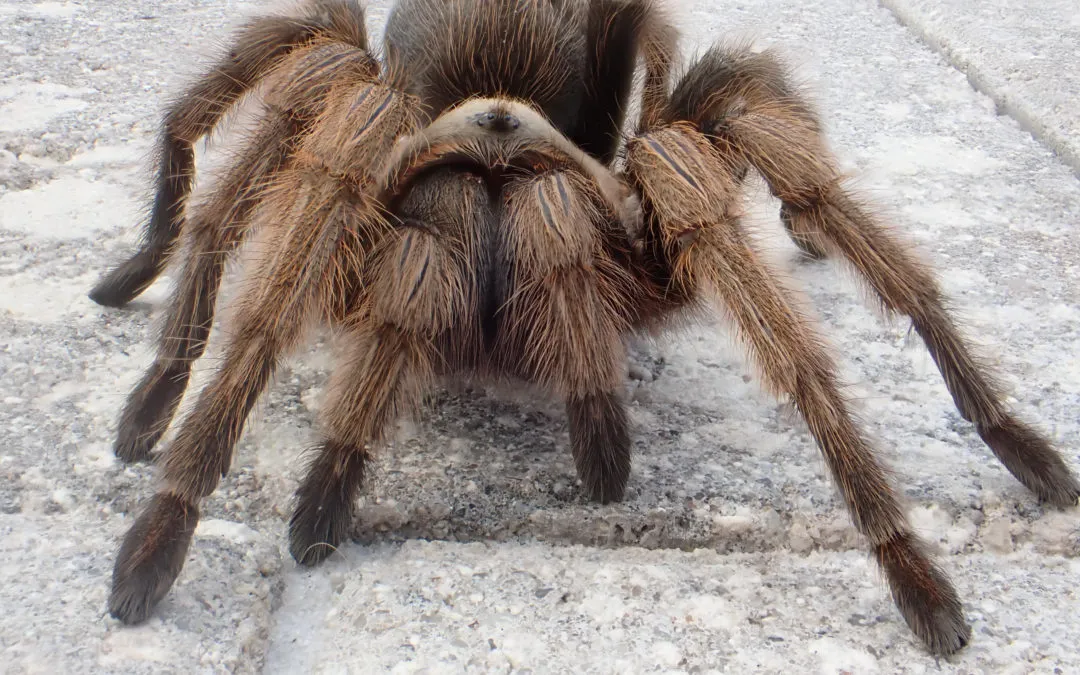The Arizona Blonde Tarantula (Aphonopelma chalcodes) is a popular choice for tarantula enthusiasts, and it’s easy to see why. These beautiful arachnids are relatively docile, hardy, and have captivating appearances. If you’re considering adding one to your family, you’re in for a treat. This guide will walk you through the top 5 things to know before you buy an Arizona Blonde Tarantula, ensuring you’re well-prepared to provide the best possible care for your new pet.
What is an Arizona Blonde Tarantula (Aphonopelma chalcodes)?
The Arizona Blonde Tarantula, scientifically known as Aphonopelma chalcodes, is a terrestrial tarantula species native to the southwestern United States, primarily Arizona. These spiders are known for their beautiful coloration; the females are typically a light tan or blonde color, giving them their common name. Males often display darker shades and exhibit more vibrant hues as they mature. They are relatively large spiders, with females reaching up to 6 inches in leg span, while males are generally smaller. Their docile nature makes them a favorite among tarantula keepers.
Appearance and Characteristics
As mentioned, the most striking feature of the Arizona Blonde Tarantula is its color. The females, the ones most commonly kept as pets, are a lovely, consistent blonde color, providing a calm and gentle aesthetic. The males have a darker, richer color and often have reddish hairs on their legs. They have a sturdy build, and their bodies are covered in fine hairs, which can be irritating if they are kicked off. They are generally slow-moving spiders, which adds to their appeal as a pet.
Lifespan and Size
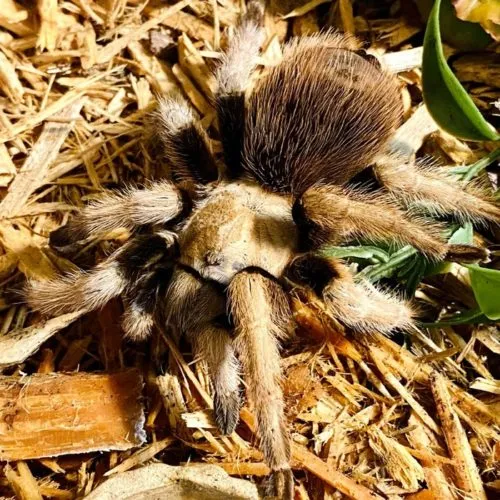
One of the attractive aspects of owning an Arizona Blonde is their longevity. Females can live for an impressive 20-30 years with proper care. Males, on the other hand, have a much shorter lifespan, typically living for only a few years after they mature. Regarding size, adult females can reach a leg span of up to 6 inches. This is a substantial size, so be sure to provide an appropriately sized enclosure. Knowing these characteristics allows you to appreciate and care for your tarantula properly.
Why Buy an Arizona Blonde Tarantula?
The Arizona Blonde Tarantula has a lot to offer as a pet. Their relatively docile nature, ease of care, and impressive lifespan make them a great option for both beginner and experienced tarantula keepers. Their beautiful coloration adds aesthetic value to any home. They also present a fascinating subject for observation, providing a unique and rewarding pet-owning experience. Unlike some more active or aggressive tarantula species, the Arizona Blonde allows you to enjoy observing its natural behaviors without constantly worrying about defensive actions.
Temperament and Handling
Arizona Blondes are known for their calm demeanor. They are generally not aggressive and will often try to escape or flick hairs rather than bite if threatened. While bites are rare, it’s important to handle them carefully to avoid stressing them. It’s generally not recommended to handle them unless necessary. If you must handle them, do so slowly and gently, and avoid sudden movements. Always wash your hands before and after handling to prevent the spread of any potential contaminants.
Ideal for Beginner Tarantula Owners
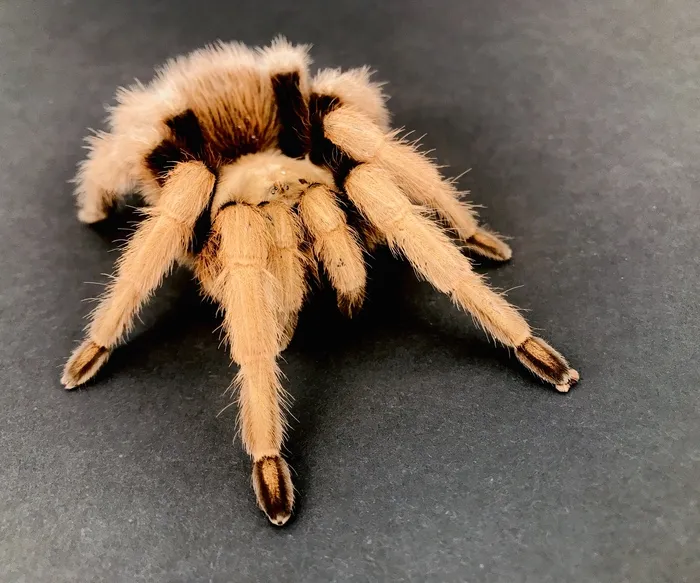
Their docile temperament and relatively simple care requirements make the Arizona Blonde an ideal choice for beginner tarantula owners. They don’t require complex setups or specialized feeding routines, making them less intimidating to care for. This makes them a fantastic entry point into the fascinating world of tarantulas. This is a great species to build a foundation of tarantula care knowledge and gain experience before considering more demanding species.
Where to Buy an Arizona Blonde Tarantula?
Finding an Arizona Blonde Tarantula for sale is relatively easy, but you need to know where to look to ensure you get a healthy spider. There are several reputable sources that you can consider, from specialized breeders to local pet stores that sell exotic animals. Researching your options carefully will help ensure that you start your journey with a healthy and well-cared-for tarantula.
Reputable Breeders and Dealers
Buying from a reputable breeder or dealer is the best way to ensure you get a healthy tarantula. These sources usually prioritize the well-being of their animals, and you can often learn about the tarantula’s lineage and care history. Research breeders online, read reviews, and ask questions about their practices. Reputable breeders are often passionate about their animals and can provide excellent advice and support. Look for breeders who can offer guarantees of health and proper care.
Online vs. Local Pet Stores
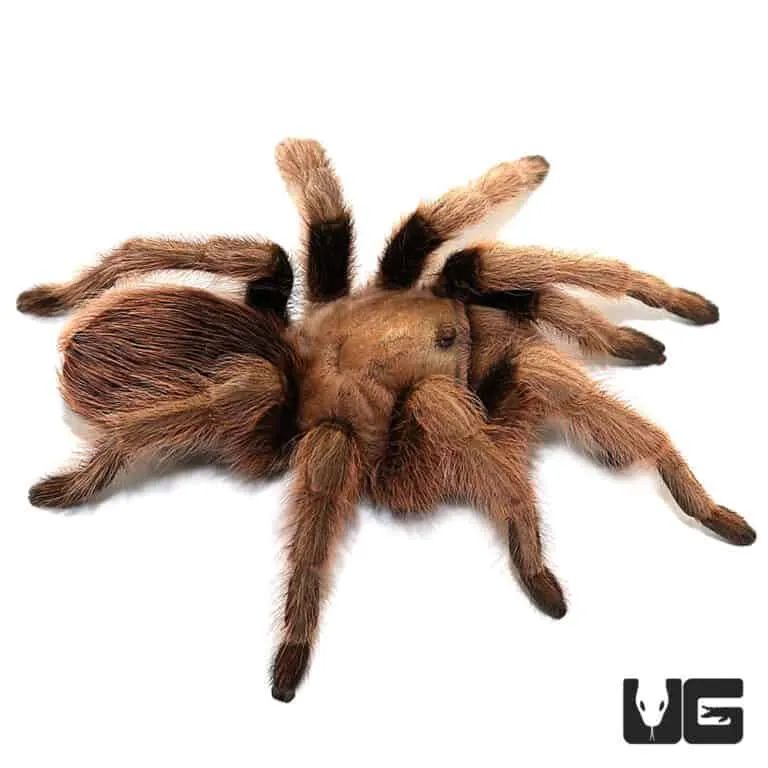
Both online and local pet stores have their pros and cons. Online stores often offer a wider selection and can provide detailed information about the tarantula’s origins. However, you cannot see the tarantula in person before buying it. Local pet stores allow you to view the tarantula and assess its health, but their selection might be limited. Ensure the pet store keeps their arachnids in good conditions and that the staff has knowledge and experience in tarantula care. Consider your comfort level with both options before making a decision.
What to Consider Before Buying
Before you purchase an Arizona Blonde Tarantula, there are a few things to consider to ensure a good fit for both you and the spider. These factors will help you prepare and ensure a good experience. They also highlight the commitment needed to properly care for this fascinating species.
Housing Requirements
Arizona Blonde Tarantulas need a secure and appropriately sized enclosure. The enclosure should be made of glass or plastic and have a secure lid to prevent escape. A good rule of thumb is to have an enclosure that is at least three times the tarantula’s leg span wide. The enclosure should also include a substrate like coconut fiber or peat moss, which will help maintain humidity and allow the tarantula to burrow. Make sure to include a water dish and some form of shelter, such as a hide or a piece of cork bark, for the tarantula to feel secure.
Feeding and Diet
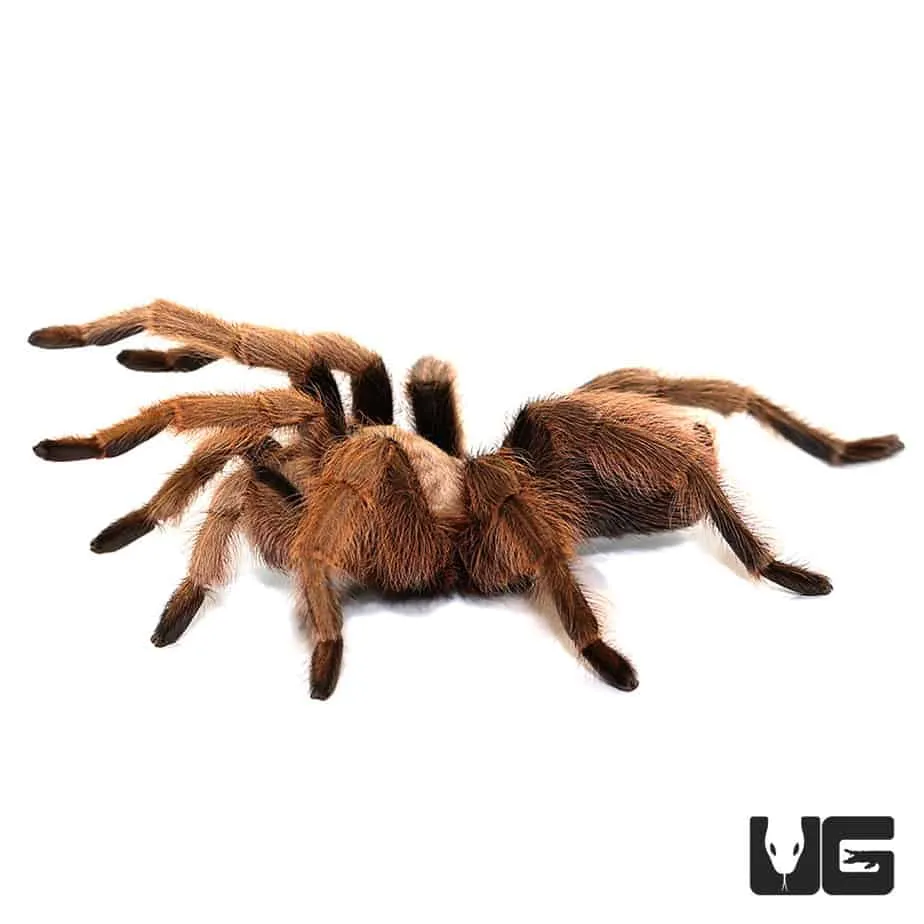
Arizona Blonde Tarantulas are insectivores. They primarily eat insects such as crickets, roaches, and mealworms. Feed your tarantula appropriately sized insects once or twice a week, depending on its age and size. Remove any uneaten insects after 24 hours. Always provide fresh water in a shallow dish. Overfeeding can lead to health issues, so adjust your feeding schedule based on your tarantula’s appetite and overall health.
Common Health Issues
While Arizona Blondes are generally hardy, they can still suffer from some health issues. Make sure to monitor your tarantula for signs of illness, such as lethargy, loss of appetite, or unusual behavior. Keep an eye out for mites, which can infest tarantulas. If you notice any health issues, consult a veterinarian experienced in exotic animals or a knowledgeable tarantula keeper for advice. Molting issues can occur if humidity is not right or if the enclosure is too small.
Arizona Blonde Tarantula Care Tips
Providing the right environment and routine is vital for the health and well-being of your Arizona Blonde Tarantula. Their care requirements, while not complex, are crucial for their health and longevity. Keep these care tips in mind to provide the best possible life for your pet.
Creating the Perfect Habitat
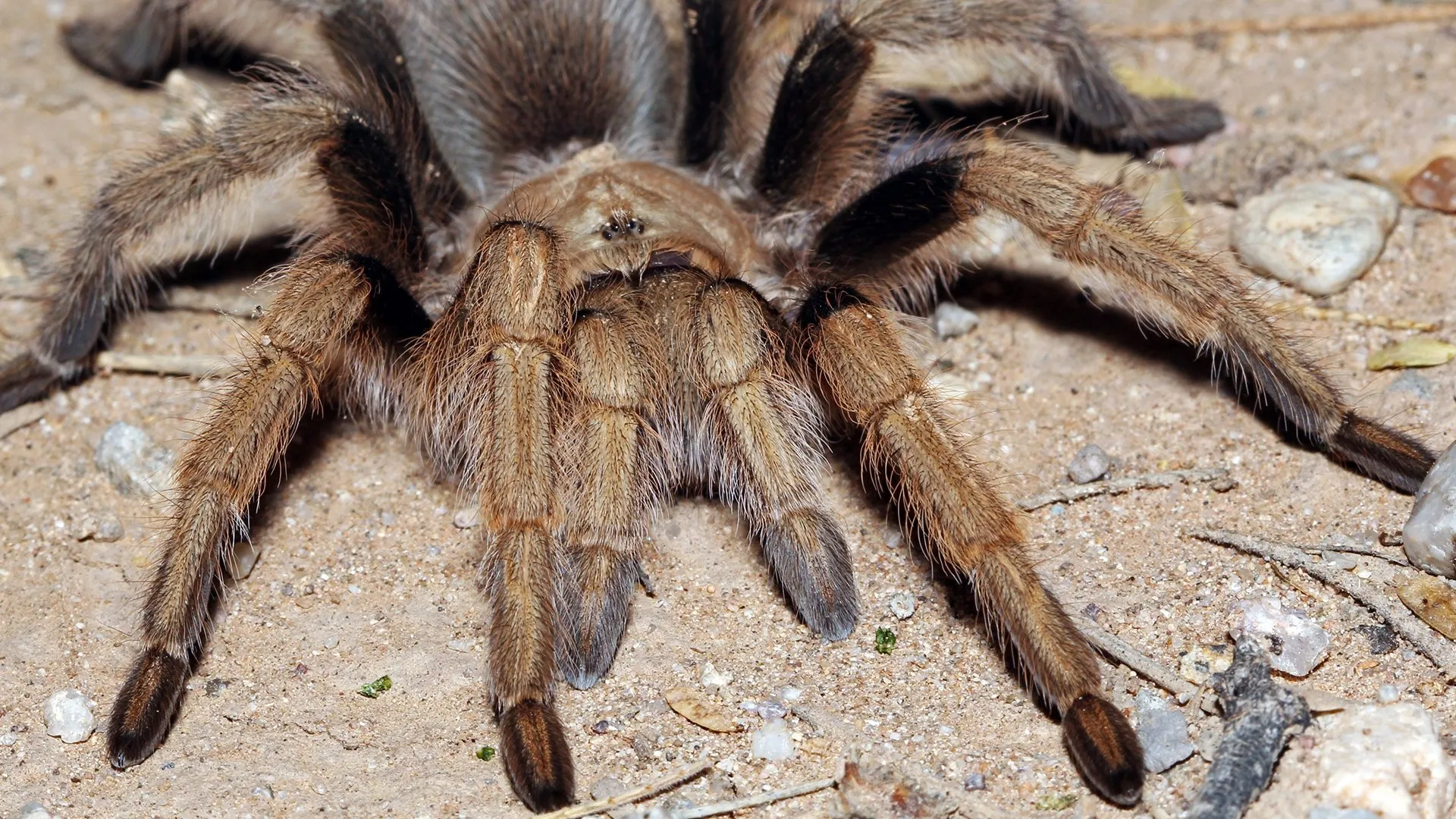
Setting up the perfect habitat is the foundation of tarantula care. The enclosure should be well-ventilated, but secure enough to prevent escape. The substrate should be deep enough for the tarantula to burrow, if it chooses to. Keep the enclosure clean by removing any uneaten food and droppings. Provide a water dish that is always filled with fresh, clean water. Place a hide or a piece of cork bark for the tarantula to feel safe and secure. Proper setup minimizes stress and improves the quality of life for your tarantula.
Humidity and Temperature
Maintaining the correct humidity and temperature is crucial for your tarantula’s health. Arizona Blondes thrive in a humidity level of 60-70%. You can achieve this by lightly misting the substrate. Temperature should be kept between 75-85°F (24-29°C). Use a thermometer to monitor the temperature and ensure that it stays within the correct range. Avoid placing the enclosure in direct sunlight or near any heat sources that could cause temperature fluctuations.
Frequently Asked Questions (FAQ)
Here are some frequently asked questions to help you even more in your journey of Arizona Blonde tarantula ownership.
What do Arizona Blonde Tarantulas eat? They eat insects, mainly crickets, roaches, and mealworms.
How often should I feed my Arizona Blonde Tarantula? Feed them once or twice a week, depending on the size and age.
Can I handle my Arizona Blonde Tarantula? Handling is generally not recommended unless necessary.
How long do Arizona Blonde Tarantulas live? Females can live for 20-30 years, while males live for a few years after maturity.
How big do they get? Females can reach up to a 6-inch leg span.
Is an Arizona Blonde Tarantula Right for Me?
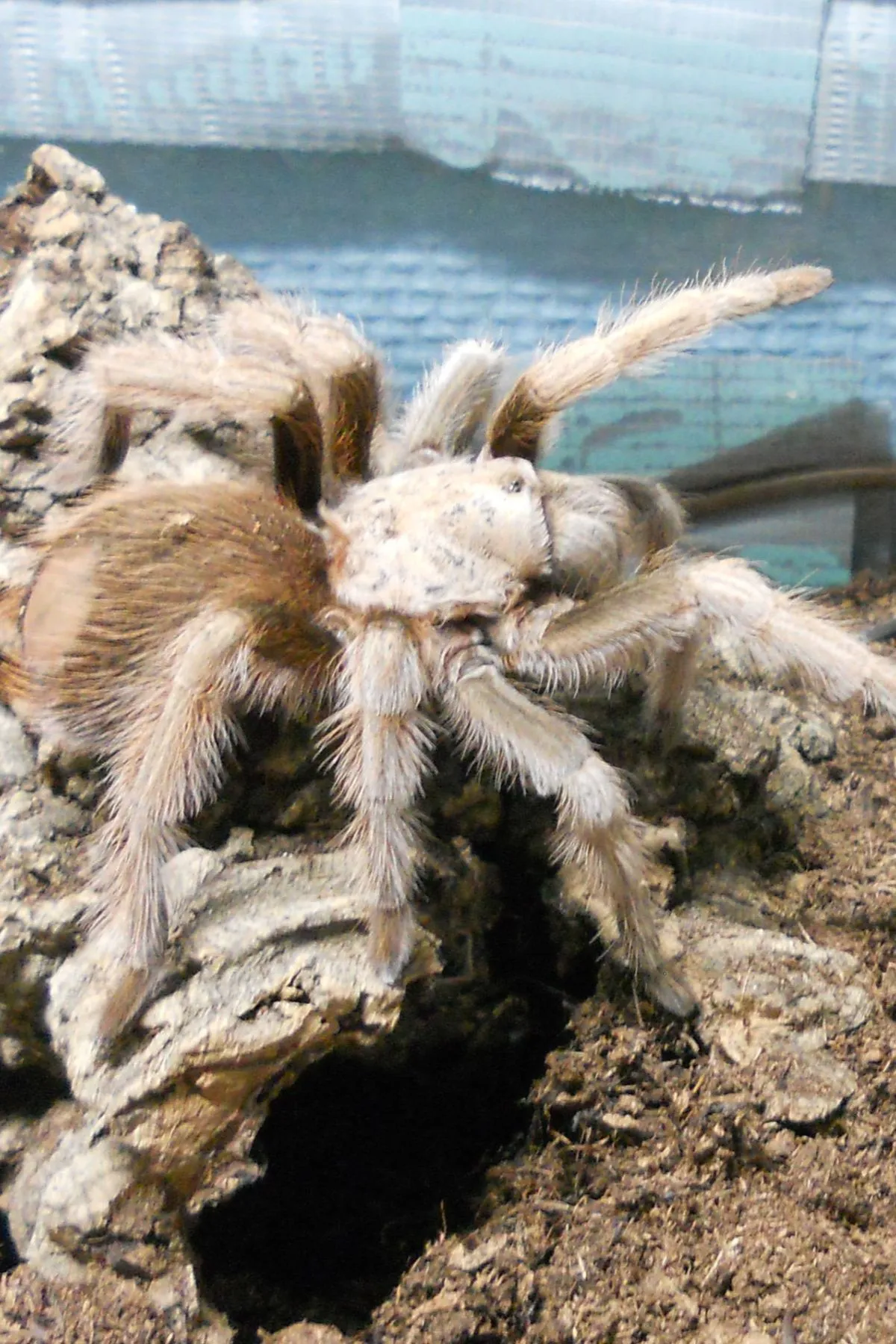
Owning an Arizona Blonde Tarantula can be a rewarding experience for the right person. They are generally docile and easy to care for, which is ideal for beginner arachnid keepers. They offer a unique and fascinating view into the world of invertebrates. If you’re prepared to provide the right environment, food, and care, the Arizona Blonde Tarantula could be the perfect pet for you. Careful planning, proper research, and a commitment to responsible ownership will set you up for a long and fulfilling experience with your new companion.
